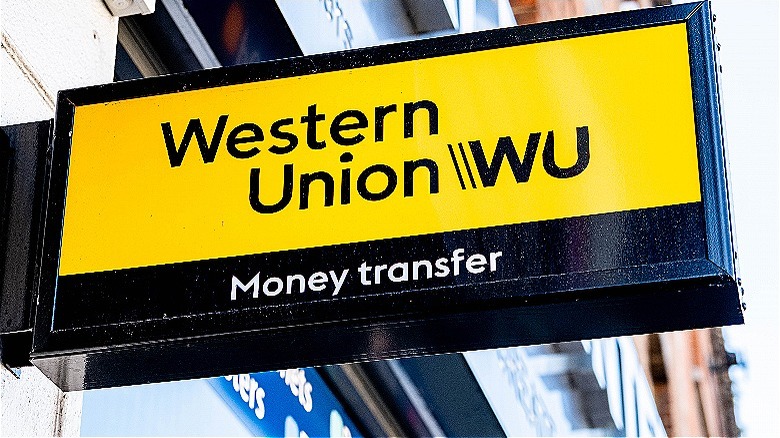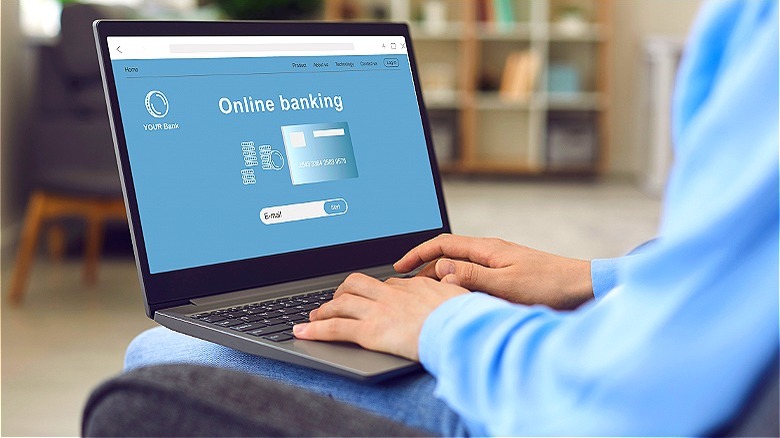How To Avoid Paying Fees When Transferring Money
In the age of rapidly advancing technology and globalization, where travel, communication, and business are easier to do than ever, buying and selling property, sending money to family or friends, paying bills, or paying for investments overseas are all necessary reasons for transferring money. Here's what you need to know before you wire money. First off, the most commonly known and secure international money transfer systems are SWIFT, CHIPS, or FedWire, which use bank routing and account numbers to withdraw and deposit funds into an account. Wiring money is among the most costly of ways to transfer money. According to NerdWallet's survey of bank fees, an outgoing domestic wire cost $25 (in 2023), with outgoing international wire tranfers having a median cost around $45. The quick turnaround time and ease of transferring large sums of money around the world account for the cost.
Per a Bankrate survey, 27% of Americans with checking accounts are already giving away $24 a month, or $288 per year, in banking fees. This is just for basic services, such as ATM, overdraft, or simply holding the account. Considering that 30% of them would rather pay down personal debt, and just over a quarter of them would prefer to apply those fees to savings, it makes sense to want to avoid additional fees for transferring money whenever possible. Here's how to avoid paying fees when transferring money.
Opt for an ACH transfer
When it comes to limiting transfer fees, an Automatic Clearing House (ACH) transfer might be a way to go. According to Nacha, the organization responsible for governing the ACH network, ACH transfers between businesses in 2023 accounted for 31.5 billion payments worth $80.1 trillion. ACH transfers are often used for debit payments or direct withdrawals for regularly timed bill payments, while ACH credit payments are often used for automatic paycheck deposits or money transfers to friends or family. Either way, your account and bank routing number are all you'll need to transfer money online to most financial institutions in a few days.
While wire transfers can be costly, an ACH transfer fee is usually nonexistent for the one sending money, and any fees processed on the other end can be as little as a tenth of one cent or between 1% and 2% — up to a limit of $5 — for large money transfers. If you know you'll be transferring money on a regular basis, shopping around before choosing a bank matters, since fees can be more or less depending on the bank. Find the financial institution that charges lower fees so that more of your money gets to your intended target.
Send through a digital payment network
Venmo, Zelle, PayPal, Xoom; these are among a few digital payment networks that can save you time and money if you need to send money to someone. For senders, there are no issues involving scrounging up bills, withdrawing cash from an ATM that incurs fees, or setting up meetings with family, friends, or businesses that will take more time out of your day. Practically speaking, if your transaction requires money to be sent overseas or even a few states over, it's easier to send money from a digital wallet or bank account over the phone than take a trip out of state or country.
Certain networks are better than others for specific needs. For instance, Xoom is a safer way to transfer money internationally if you don't mind slightly higher fees, while Google Pay boasts high security and no fee but for non-Android users, the service is only compatible with iOS transfers within the United States and India. It's best to do a bit of research first based on the types of transactions you plan on sending and joining the appropriate network.
Per Capital One Shopping's digital wallet statistics, 5.2 billion around the world will own digital wallets by 2026. Biometrics, passwords, digital tokens, and two-factor authentication help provide confidence in the security of digital wallets like PayPal and your ability to transfer funds securely. Accessibility, speed, low fees, and less red tape related to international transactions make digital payment networks reasoned alternatives.
Use a global money transfer company
Wiring someone money through money transfer companies like Western Union and MoneyGram may still be a viable way to avoid hefty fees. While the ACH transfers mentioned above are great for avoiding fees, they're limited in that they're primarily for domestic rather than international transfers. Western Union and MoneyGram can also relay large sums of money into the tens of thousands of dollars, if necessary.
The downside to these kinds of companies, however, is that depending on where your funds land (domestically or internationally), transferring money this way can set you back around $6 for a $50 in-store pick-up to $100 for $1,000 or more, per Finder.com. That aside, in a comparison of outgoing international transfer fees between Western Union and major U.S. banks, banking fees starting at around $25 that climb up to $85 — and that's not including longer transfer times with less favorable exchange rates and other hidden fees — place Western Union on top for international transfers. A $5,000 money transfer through MoneyGram also saves you about 70% more money than traditional U.S. banks. Better yet, both MoneyGram and Western Union have money transfer apps allowing $10,000 to $50,000 to be transferred to over 200 countries worldwide.
Explore email money transfers
An email money transfer, or EMT, is an online banking service that allows the sender to transfer money from their bank account to another person by email, and as a Canadian banking invention, it isn't a product available to United States citizens through banks. While the money itself isn't sent by email, deposit instructions make the funds available for the receiver so long as they're set up for online banking.
While American banks don't yet offer this type of service, money transfer companies like Wise, PayPal, and Google Pay do for international money transfers. So long as your receiver agrees to type their banking information into the network and follow the emailed steps to deposit the money, this sort of money transfer is relatively easy to master. The funds are typically accessible right away.
Specifically, if using Wise, if your recipient has a Wise account and lives in a region with the same currency, it's free for the sender to send an EMT. As an added security feature, if you're the recipient for whatever reason doesn't deposit the email money transfer within a week, Wise will refund your transfer to you.
Get a money order or bank draft
Money orders and bank drafts may require a trip to your bank but could be worth it in the long run. A banking institution guarantees a bank draft by transferring the funds from the sender's account to a reserve account where it stays until a recipient cashes it. Note that bank drafts are typically used for larger payment amounts. Money orders, on the other hand, offer another relatively safe way to send sums of money up to $1,000 for a small fee and can be purchased at the postal office, credit unions, and banks.
Bank drafts typically have a fee of no more than $10 while a money order will set you back around $5 or less. However, note that money orders can become more expensive for international transfers, with rates just under $50 before adding a processing fee. In this case, you're better off going the route of a bank draft over money order since the fee remains the same. We have some helpful tips on how to fill out a money order correctly if you're a newbie.





